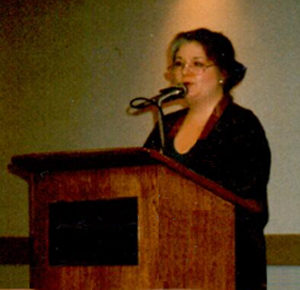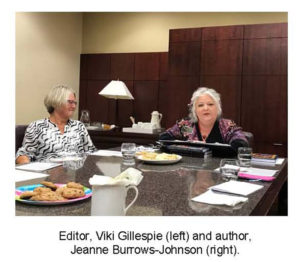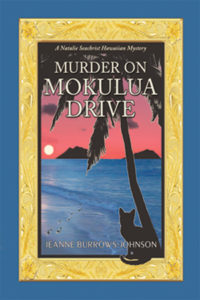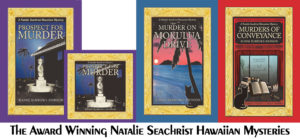
PREPARATION FOR PUBLIC SPEAKING ENSURES QUALITY BRANDING!
A shortened version of this third blog on using public speaking as a means for enhancing your branding identity first appeared on the website https://hometownauthors.com, which offers a variety of articles from guest authors of who are members of Hometown Reads. Before reading this blog, you may wish to review Effective Materials for Public Speaking and All the World’s a Stage. Today we’ll explore making these events more than a presentation of an author’s books, for public speaking can be one of the most important aspects of any creative professional’s branding program…
FINAL PREPARATIONS FOR PUBLIC SPEAKING
It’s time to hit the road! You’ve prepared for speaking opportunities by shaping marketing materials, bios, introductions, and handouts for varied audience. Your media releases require only the details of Who, What, When, and Where. You’ve verified venue features and obtained equipment necessary for this and future appearances.
All you have to do is pack everything and hit the road…right? Not quite.
PREPARING TO BE A STELLAR PUBLIC SPEAKER
I hope you’ve been vocalizing daily—in song [for those who can], vocal exercises, and oral readings. Many events place a time limit on speakers, so timing readings can ensure completing your presentation with a generous Question and Answer segment.
Next, consider your appearance. You can’t lose weight quickly, but how are your hair, skin, and nails? Do your clothing and accessories look good on you…and travel well? Perhaps you’ve worked with a stylist to determine your optimal color palette, hairstyle, clothing designs, and accessories to maximize expressing your personality…
Look professional, knowing you can remove a tie, loosen a collar, or remove a jacket. [See Resume and Career Tips. Because my work centers on Hawai`i [especially with the Natalie Seachrist Hawaiian Mysteries], I wear dresses in tropical greens and jackets with Asian or floral designs. Depending on the neckline, I affix a name badge (with magnet) and avoid necklaces (which can become uncentered). To minimize distraction and sound interference, I don’t wear dangling earrings or loose bracelets. I complete my theme with an artificial orchid for my hair—since fresh flowers don’t last through multi-hour events.

MULTIPLE PRESENTERS
Panel discussion speakers are usually seated at a table or in a semi-circle or line of chairs. Whenever you’re in plain view, be aware of your attire and stance…to insure you’re not providing a less-than desired floor show! A dress that looks lovely when I’m standing, may not look professional when I’m seated. Male or female, check out other participants’ attire to harmonize overall appearance. For samples of color combinations, please visit Plays on Color.
CALLING FOR ATTENTION
~ Event organizers may generate Media Releases, as can you—in your hometown and locales where you’ll appear. Consider also sending out event follow-up releases, to encourage members of the media to seek you out.
~ Add a news page to your author website and blogs that highlights your travel.
~ Social media can be more important than traditional media. Publicize where you’ll appear with contact information. If your events aren’t open to the public, announce cities where you’ll be.
~ Take event pictures [book in hand] for immediate release and future marketing materials—asking permission to use images featuring other people.
TRAVEL CONSIDERATIONS
~ Ship books and marketing materials in advance when possible.
~ Allow one day for rest and preparation prior to your event.
~ Purchase travel tickets permitting change of schedule.
~ Plan ground transportation minimizing strain on you, as well as cost.
~ Hotels often provide airport transport, valets, safes, and restaurants. Private hosted accommodations lessen privacy. A B&B may be appropriate when driving.
~ Financially, notify credit card institutions you’re travelling. Obtain cash for tips. Determine if you need a tax or sales license. Decide whether to accept credit cards, electronic payment, and/or cash for sales.
~ Carry emergency clothing, accessories, medicines, and toiletries in hand-held luggage, in case checked bags fail to arrive.
~ Personally carry hardcopy masters and electronic files for reproduction.
~ Dress to attract attention while travelling—name badge, book image, and business cards at the ready!
SET YOUR STAGE…WHEN YOU CAN
~ Place a banner or picture on podium front.
~ Check equipment–lights, sound, and projection.
~ Position supplies for speech–large watch, laser pointer, pen, props, travel mug with slightly warm water.
~ Set up display near front of entrance–signage, marketing materials, books, handouts, and sign-up sheet for future event notifications. Man display when possible.
~ Be aware that electronic projections often fail because of file format incompatibility between source and venue operating systems and versions of software.
~ Maximize visibility of necessary folders and files on or near podium.
~ Carry backup hardcopy of your presentation for you and handouts of primary points for your audience.
BEFORE, DURING & AFTER PERFORMANCES
~ Warm up vocally and physically.
~ Provide your bio and a short introduction to event organizers.
~ Pace yourself…allow time for Q&A to maximize audience interaction.
~ Conclude with an inspiring thought. I often hold up a pin with a single word appropriate to my message…
~ Make periodic eye contact with your audience. Let attendees feel you care about them individually.
~ Sending gracious Thank You cards/gifts helps maximize an event’s long-term branding value. Carry mailing labels, packing supplies, and postage.
Wishing you the best in your creative endeavors,
Jeanne Burrows-Johnson, author, consultant, and motivational speaker
Suggestions for Dynamic Public Appearances are available at:
Author Appearances, December 2015
Promo Materials for Public Speaking, July 2018
All the World’s a Stage, August 2018
Final Preparations for Public Speaking, September 2018
For more ideas to maximize being memorable and other marketing tips, see Wearing your Brand. For further information on branding and strengthening your Wordpower© please visit: Imaginings Wordpower and Design Consultation.
To learn more about the award-winning Natalie Seachrist Hawaiian Mysteries, including Murders of Conveyance [Winner, Fiction Adventure-Drama, 2019 New Mexico-Arizona Book Awards] and other projects, please drop in at my author’s website JeanneBurrows-Johnson.com. You’ll even find Island Recipes that might inspire your culinary creativity.
Follow Me:
Amazon, Arizona Authors Association, Apple Books
Audible, Authors Den, Barnes and Noble, Blogarama, Book Bub
Cozy Mysteries-Unlimited, Facebook, Good Reads, Hometown Reads
Book sellers may contact book distributors such as:
Baker & Taylor, Follett, IPG, Ingram, Mackin, Midpoint, TitleWave





